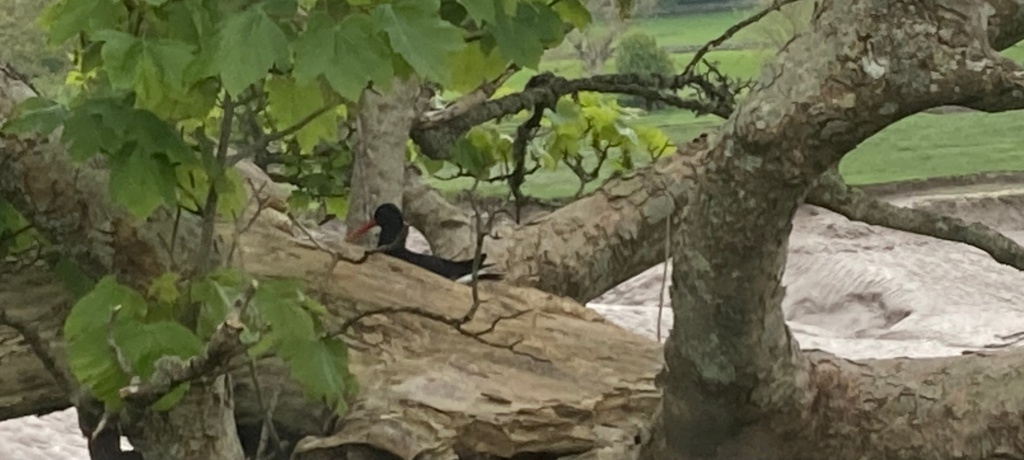
For several years, a particular pair of oystercatchers laid their eggs in the meadow above the estuary. I put cameras at their nest and watched them come and go with great excitement. Sometimes they would last for two or three weeks before badgers would eat their eggs – but in other years, the eggs would be taken within hours of being laid. I was pleased that I had been able to encourage them into nesting there, but endlessly disappointed by the fact that disaster always ensued.
Following several consecutive years of failure, I resolved to build an electric fence around the nest in 2023. I reckoned that would see off the badgers and give the birds a chance of success – but there were no oystercatchers in the meadows last year. That was puzzling, because they’re very site-specific birds and a well-established pair like mine would always return to the same fields to breed. I wondered if they had lost their eggs before I had even been able to find them, and I chalked up their absence to a recurring sense that, most of the time, we just never know what happens. But they were back this spring and conspicuously holding a territory throughout April and early May.
Deploying all my normal tricks, I went in to look for the nest and found nothing. Two days later, I tried again and failed again. The birds were clearly protecting something, and it was tantalising to watch them scuttle and flutter away from me beneath an overhanging crown of sycamore trees. In the end, I had to stand a quarter of a mile away and wait for them to settle down after my disturbance. Even when they couldn’t see me, the birds went through a pantomime of concealment and sleight of hand, pausing and hiding and indicating towards all kinds of possible places where the nest might be. When they were completely sure that every security protocol had been followed, one bird fluttered up into a broken tree on the riverside and settled down on its nest.
Oystercatchers are “supposed” to be ground-nesting birds. I had searched all around the base of this tree on the hunt for the nest, but the thought had never crossed my mind that they would be fifteen feet up in the platform of a broken branch. It’s not an impossibly unusual occurrence; I know several places where oystercatchers nest in trees, in bushes or simply just on stumps a few feet off the ground. Even in the 1990s, I knew a pair of birds which nested in the top of a roadside gatepost – but it does seem like this behaviour is gradually becoming more common.
Oystercatchers now seems to nest on every roundabout and builder’s yard, and no hospital or school is complete without a pair of birds on the flat roof. These oystercatchers are usually more likely to hatch their eggs than those which nest on the ground, but it’s hard to know if the resultant chicks are more likely to fledge and become adults. If they are, perhaps it’s likely that they’ll choose a similar nest site when the time comes for them to breed – and that’d be how the habit would spread. In theory, ground-nesting oystercatchers could slowly die out and the birds could become roof or tree nesting specialists – but I think they’re too curious and dynamic to ever settle in one place for too long. No sooner will they have perfected this habit than something new and better will occur to them.
I would love to believe that my old pair of oystercatchers finally got fed up of losing their eggs to badgers and decided to nest in a tree. In the weeks before they lay their eggs, waders spend a lot of time around the proposed nest site and they generally have a pretty good idea of what they’ll be up against when incubation starts. The fox or badger which finally eats their eggs is not a stranger or a bolt from the blue – the wader will probably have seen that specific predator many times, and it will be no surprise when it happens. The birds will have chosen the location of the nest on the basis of all kinds of complex trade-offs and the calculated assessment of risk. But it’s too much to imagine them saying “ground-nesting just isn’t working for us – let’s try a tree”. Instead, it’s probably more likely that my old pair fell apart in 2023, and they have been replaced by a new pair with new tricks.
Leave a comment